
Search
The Renewable Energy site for Do-It-Yourselfers
Undershot Water Wheel
Some pictures of the water wheel:
Note: A couple of these pictures do
not appear in the "Full Details" write up above.
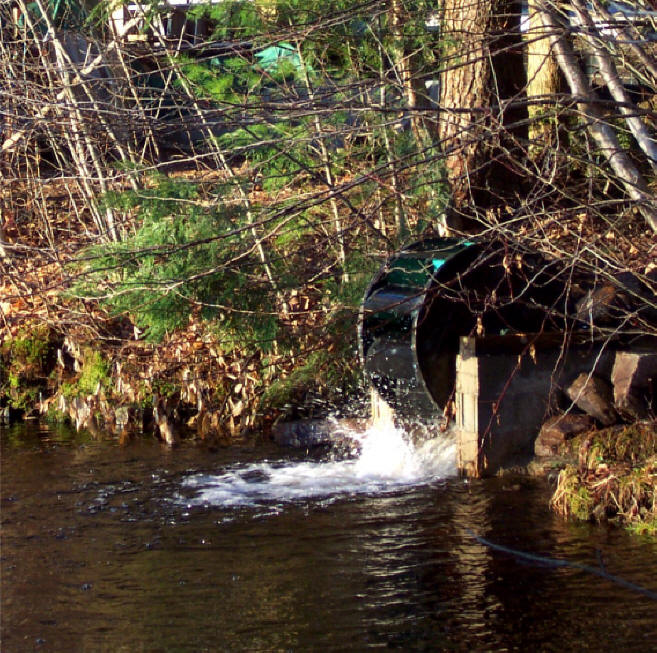
The wheel in operation
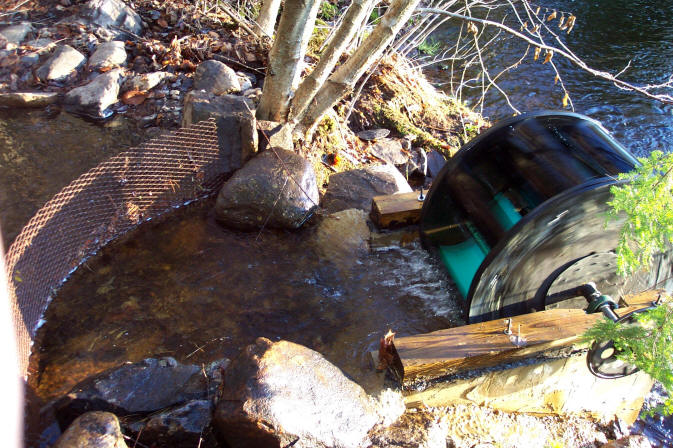
View from inflow side of wheel.
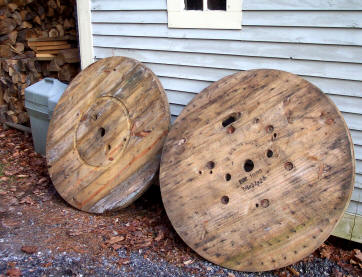
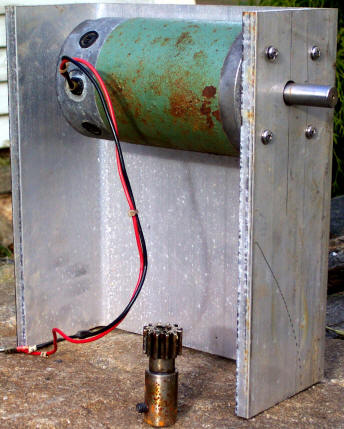
Tape drive motor used as generator,
and cable spool ends that form the sides of the wheel.
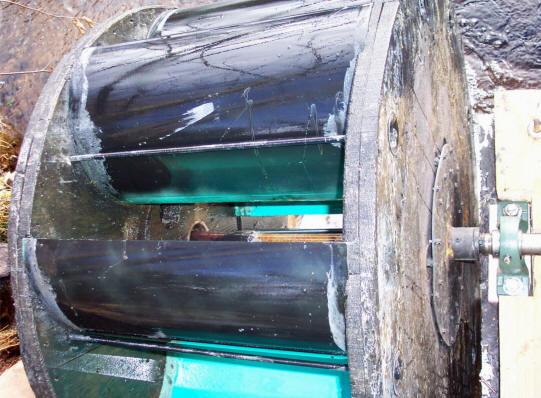
The wheel buckets cut from PVC pipe.

Shaft, bearings and primary gear. A larger gear ratio than is shown will
probably be required for good performance -- download the pdf file listed above
for details.
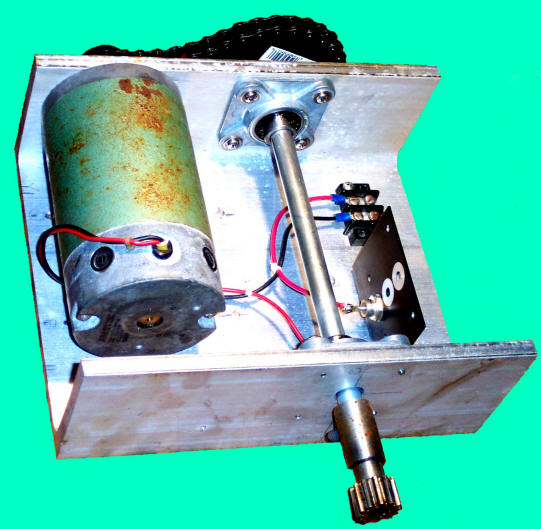
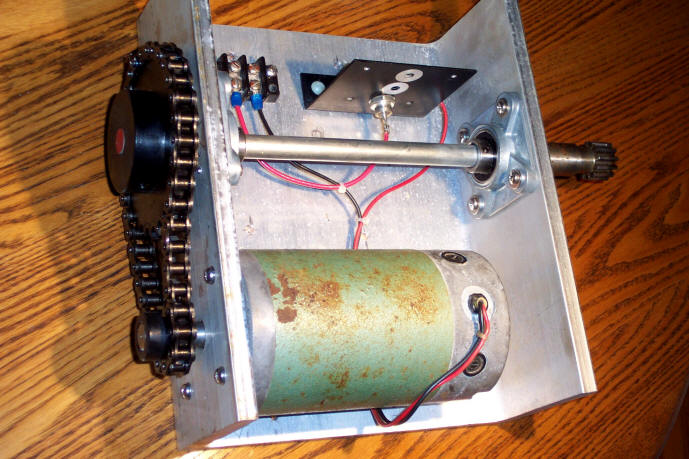
Generator and gearing.
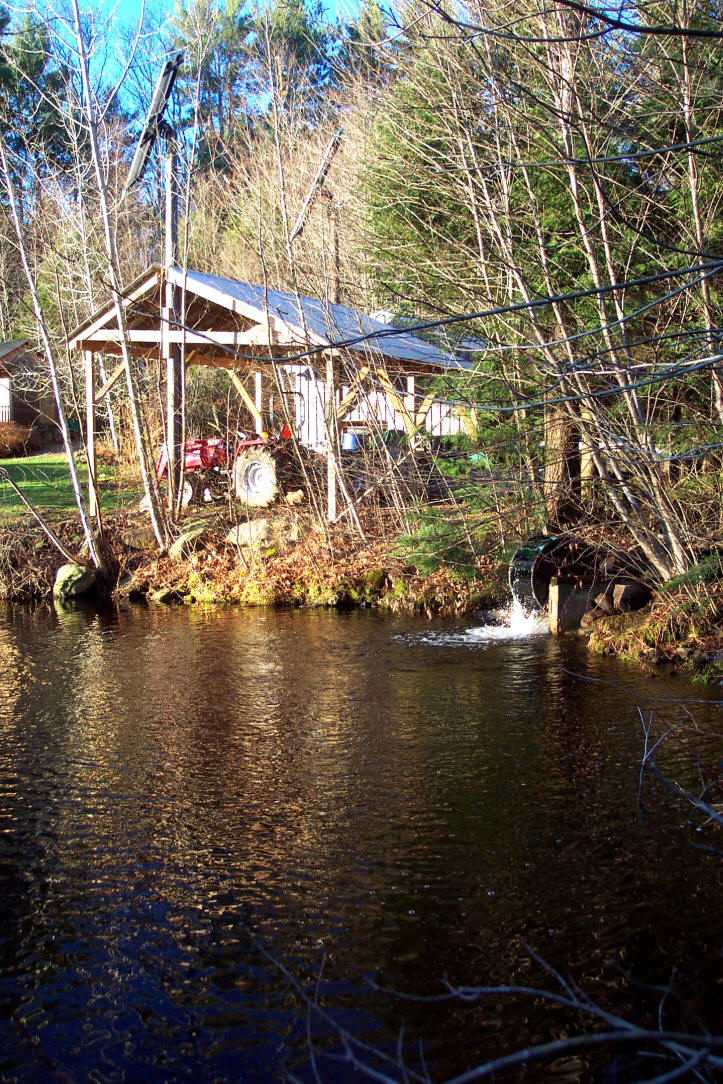
Looks like its been there for a hundred years.
Some
Follow-Up Questions:
These are the answers to some email
questions on the water wheel:
1) How does the generator hook up to the power source? Single
battery or multiple?
As several of the photos show, I use an isolation diode (30 Ampere) to prevent
the battery bank (Ten 220 AH T-105 batteries wired in series/parallel for 12
volts @ 1100 AH) from back feeding the generator. The hookup is through a 30
ampere Square-D QO breaker right onto the battery buss of my solar system. There
is no need to use a controller since the power output from the generator could
not overcharge the battery bank.
2) Where can I get a generator as shown? What is the generator
connected to in the picture with the generator mounted in the gearbox?
There is a pretty good discussion of this particular generator/motor at
http://www.otherpower.com/otherpower_experiments_tapedrivemotors.html along
with possible locations where one could purchase one. Another option would be to
use a permanent magnet automotive alternator from
http://www.hydrogenappliances.com/powerpmas.html though I've not tested
performance with one, it would be my choice with a larger water wheel. As to
question 2b, see my answer to question 1.
3) Do you have to regulate/control the charging of the battery
somehow? With what?
See answer to question 1.
4) It seems like the water is entering at midpoint of the wheel.
Would more power be produced if water entered at the top - a true
overshot wheel?
As Ron Shannon's Water Wheel Engineering presentation at
http://ipc6.permaculturewest.org/ch08/shannon/index.html indicates, the
efficiencies of an overshot and undershot wheel are very similar. The selection
criteria I used was a matter of available head at my alternate site. The
original site and intent was to incorporate the wheel in an overshot
configuration but my wife had other plans. I had taken photos and written a bit
of a detailed story as to how the current location was selected after my
original location (a four foot waterfall) was firmly rejected just prior to
installation for aesthetic reasons... I later opted against submitting it since
it offered nothing of value to the design other than an example of its
flexibility.
5) Author did not say what he was powering from this wheel/generator. Any
idea?
I utilize the power generated from this wheel to subsidize the output from the
two 500 Watt solar panel racks as it was available and otherwise a wasted
resource. New England has had no scarcity of rainfall these past few years at
the expense of diminished sunshine. The composite system powers communications
equipment, three freezers, propane furnace/hot water, well pump and all
electrical requirements of my barn thereby reducing my utility bill by 50%.
I'm pleased to report that the
waterwheel has performed very well up until the stream froze solid. I'll let you
know how it does after the spring thaw and about 2 million gallons per day
attempts to get past it during April/May.
Allan
Thanks to Allan for providing
these answers!
Update from
Allan on April 18, 2008:
"I tightened up the tolerances
around the sluiceway to give merely a 1/4 inch clearance to the water and
this resulted in almost a 30% increase in velocity and torque. I'm
researching (in earnest) a more efficient generator to boost the output
closer to the theoretical value."
Allan
11/27/06
Updated 2/15/07, April 18, 2008


